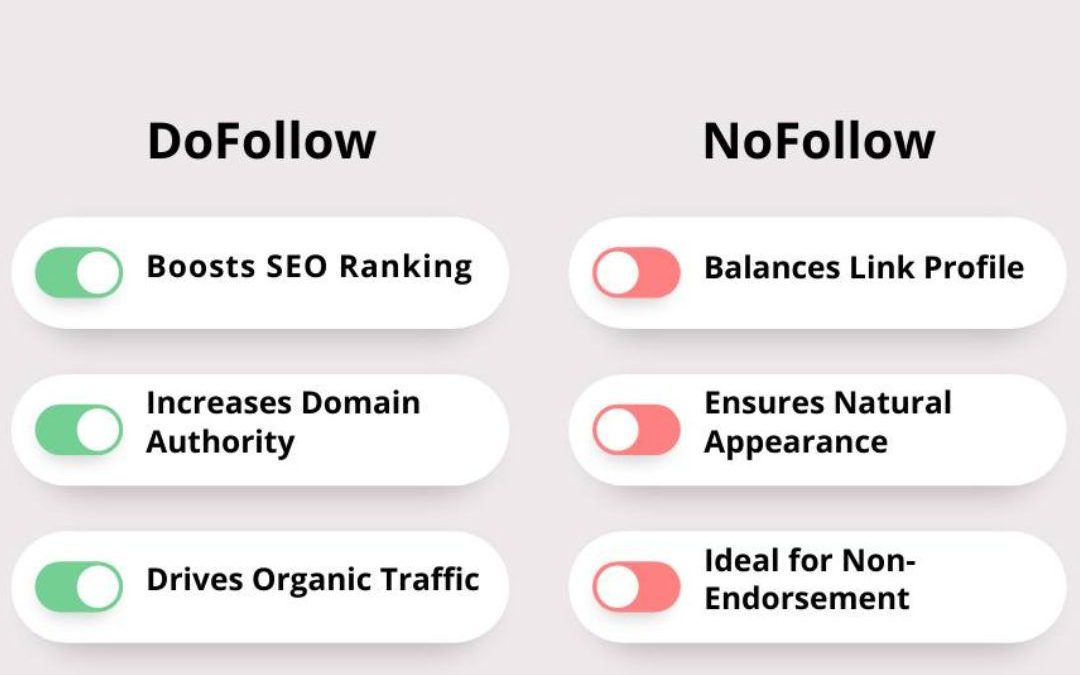Introduction:
In search engine optimization (SEO), finding the right balance between DoFollow and NoFollow links is crucial for improving website visibility and rankings. Both types of links serve different purposes and impact your website’s overall SEO strategy. Understanding the differences and efficiently managing their execution can help you optimize your website for search engines while maintaining a healthy and natural link profile.
I. What are DoFollow and NoFollow Links?
A. DoFollow Links:
DoFollow links are regular hyperlinks that pass link equity or “link juice” from one website to another.
Search engines follow these links and consider them as votes of confidence or confirmations for the linked page’s quality and relevance.
DoFollow links can positively effect a website’s search engine rankings and organic visibility.
B. NoFollow Links:
NoFollow links contain an HTML attribute called “rel=nofollow,” which instructs search engines not to follow or pass link equity.
These links were introduced to combat spam and discourage paid links, blog comments, and user-generated content from influencing search rankings.
NoFollow links are not considered as direct endorsements by search engines but still contribute to overall website visibility.
II. Importance of Balancing DoFollow and NoFollow Links:
A. SEO Authority and Credibility:
DoFollow links from reputable and authoritative websites signal to search engines that your website is trustworthy and relevant.
Having a healthy mix of DoFollow links helps build your website’s authority, which positively impacts search rankings.
B. Natural Link Profile:
Search engines expect a diverse and natural link profile that includes both DoFollow and NoFollow links.
A well-balanced link profile appears more organic and genuine, reducing the risk of penalties or algorithmic filters.
C. User Engagement and Traffic:
While NoFollow links don’t directly impact SEO rankings, they can still drive valuable referral traffic and increase user engagement.
NoFollow links from high-traffic websites or relevant communities can attract potential visitors to your site.
Read More About: Top 5 Pitfalls to Dodge in Your Link Building Strategy
III. Strategies for Balancing DoFollow and NoFollow Links:
A. DoFollow Link Strategies:
Earn editorial links by creating high-quality content that naturally attracts attention and backlinks from other websites.
Seek guest blogging opportunities on authoritative websites within your niche, ensuring the inclusion of relevant DoFollow links.
Engage in influencer marketing or partnerships to obtain DoFollow links from reputable industry figures.
B. NoFollow Link Strategies:
Participate in relevant online communities, forums, or social media platforms, contributing valuable insights and including NoFollow links in your profile or comments.
Utilize social media marketing to share content and engage with users, as social media platforms generally use NoFollow links.
Optimize user-generated content platforms like Quora or Reddit, including NoFollow links where appropriate.
IV. Monitoring and Optimization:
A. Regular Link Profile Analysis:
Monitor your website’s link profile using SEO tools to understand the ratio of DoFollow and NoFollow links.
Identify any suspicious or spammy links that could negatively impact your website’s SEO performance.
B. Link Removal or Disavowal:
If harmful or low-quality DoFollow or NoFollow links are detected, consider reaching out to webmasters for removal. As a last resort, use the Google Disavow Tool to request search engines to ignore specific links that you can’t control.

